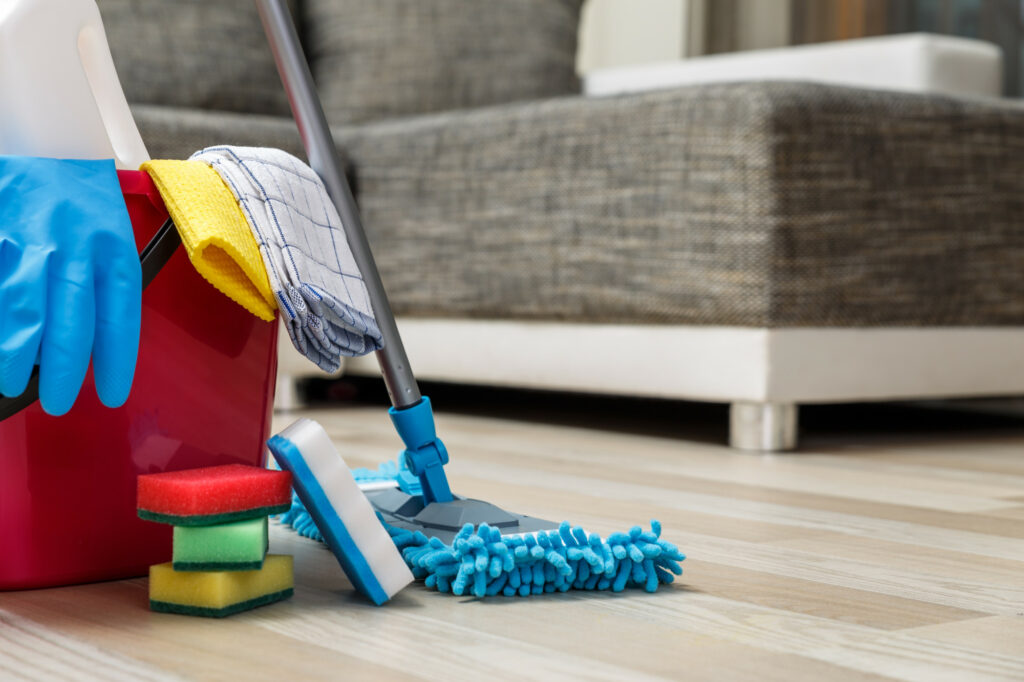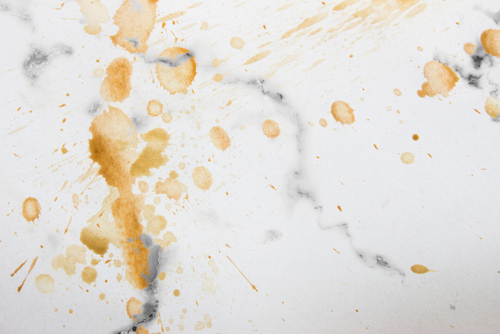Note:
Some contents in this article may contain external links. For more information, please refer to our
Privacy Policy
What is Marble Flooring?
Marble flooring is waterproof material, that is capable of managing moisture without any risk of molding or other related problems.
There’s nothing more elegant than marble, a timeless material available in a variety of colors and veining styles that make fabulous flooring. However, this delicate, porous stone is notorious for its susceptibility to stains—and only certain cleaning agents can be used on it without causing damage. How’s a homeowner to keep them looking brand new? If you’re curious about how to clean marble floors in your own home, keep reading for all the tips you’ll need, from routine care to stain removal.
Marble, an exquisite material with a wide range of colors and veining styles, is renowned for its timeless elegance and is often used as flooring. However, this delicate and porous stone is prone to staining, requiring specific cleaning agents to avoid any damage. So, how can homeowners maintain the pristine appearance of their marble floors?
If you’re interested in learning how to clean marble floors in your own home effectively, continue reading for a comprehensive guide that covers routine care and stain removal techniques.
Steer Clear of Tough Stuff
Stay away from harsh cleaners. As a calcareous stone, marble is highly sensitive to anything acidic.
- Just as cutting lemons directly on a marble counter is a recipe for disaster, using acidic cleansers such as those containing vinegar on marble floors will create dull spots called etching.
- Abrasive cleaning agents like scouring powders or creams, dry or soft cleansers, and bathroom, grout, and tub and tile cleaners should be avoided as well.
- Even a cleaner formulated for granite will be too harsh; granite is a siliceous stone that can handle acidic agents.
- Beware of vacuums, which may scratch the stone surface.
- Similarly, forego scrubbing brushes in favor of soft cloths to stave off scratches.
- Always test in a small, inconspicuous area before using any of the methods for cleaning marble recommended below.
It is important to regularly clean marble floors, especially when you can see dirt and grit on the surface. To determine how often you should clean, a general guideline is to dust mop once a week for each person or pet living in the house.
For example, if there are two people in the household, you should dust mop twice a week. Additionally, placing non-slip mats and rugs near entrances can make your cleaning task easier. These floor coverings will help reduce the amount of abrasive dirt that is brought into your home from outside, thus preventing damage to your marble floors.

Consider Deep-Cleaning Once a Month
Regular maintenance is essential for marble flooring, with the frequency depending on foot traffic and dirt accumulation. It is recommended to clean them at least once a month. To avoid streaks or residue, opt for a soapless cleaner with a neutral pH level of 7. Alternatively, you can use a gentle, phosphate-free dishwashing detergent or a specialized stone soap designed for marble surfaces.
1. Start by dampening the stone’s surface using clean water. You can either use a spray bottle or a wrung-out mop to prevent the floor from getting too wet.
2. Next, apply the cleaning solution as directed by the manufacturer using a gentle mop.
3. Afterwards, thoroughly rinse the surface with clean water, ensuring that you replace the water with fresh water as needed.
4. Finally, use a soft cloth to dry the surface. According to the Marble Institute of America, it is crucial to dry marble floors after each cleaning or spot treatment. This is because some marble contains iron oxide, and water can bring it to the surface, resulting in rust stains.

See to Spills, Stains, and Scuffs ASAP
Fresh Stains on Marble Flooring
It is important to address stains promptly upon noticing them, as delaying the process may make their removal more challenging. In the event of a spill on the floor, it is advisable to immediately blot it up using a soft cloth, ensuring not to exacerbate the stain by wiping or smearing it. Subsequently, flush the affected area with water and mild soap, followed by a thorough rinse with additional water. If necessary, repeat these steps and allow the area to dry.
Set Stains on Marble Flooring
If you happen to miss a stain initially, a more focused treatment method may be necessary, as different stains call for different approaches. Stains caused by organic substances (such as most foods, coffee, tea, and fruit)—which are often the main culprits on light-colored marble—can be effectively eliminated using a mixture of 12 percent hydrogen peroxide and a few drops of ammonia. It is important to note that while hydrogen peroxide and ammonia can be safely combined, it is crucial to avoid mixing them with any other cleaning agents, as this can result in a hazardous chemical reaction.
To treat the stain, pour enough of the solution to fully cover the affected area and allow it to sit for a period of 10 to 30 minutes. Afterward, rinse the area thoroughly with water. If the stain has caused etch marks on the marble, dampen the surface and apply marble polishing powder. Gently buff the powder onto the stone using a damp cloth, and then dry the area.
For scuffs, the Marble Institute of America suggests a tried-and-true method:
Rubbing a tennis ball over the mark. The soft material of the tennis ball will safely lift the scuff away.

For further assistance in selecting the ideal flooring for your home, our team of flooring experts is readily available to address your inquiries and provide tailored recommendations to meet your specific requirements. Give a call 623-305-4390 or click here.
Share This Article

